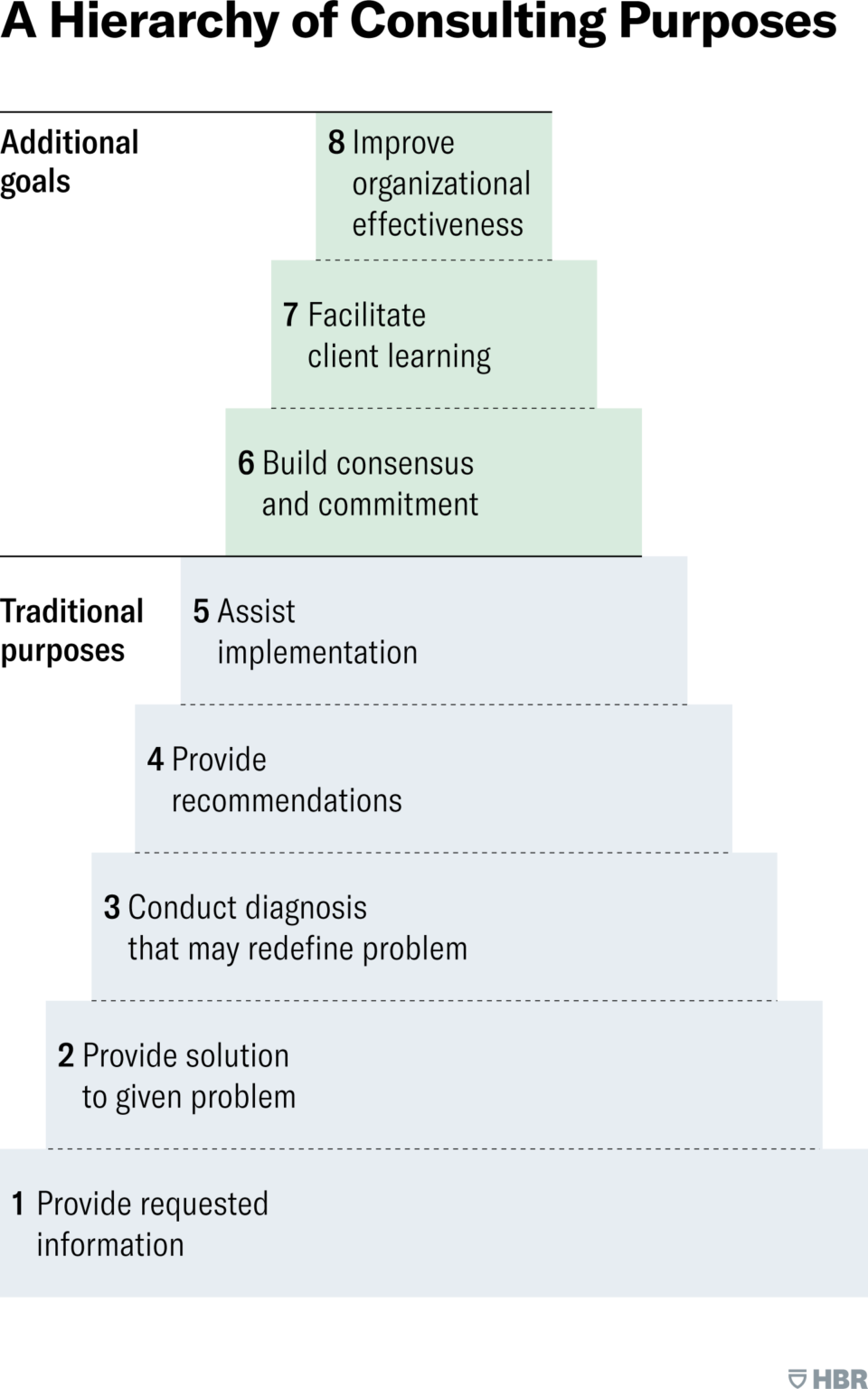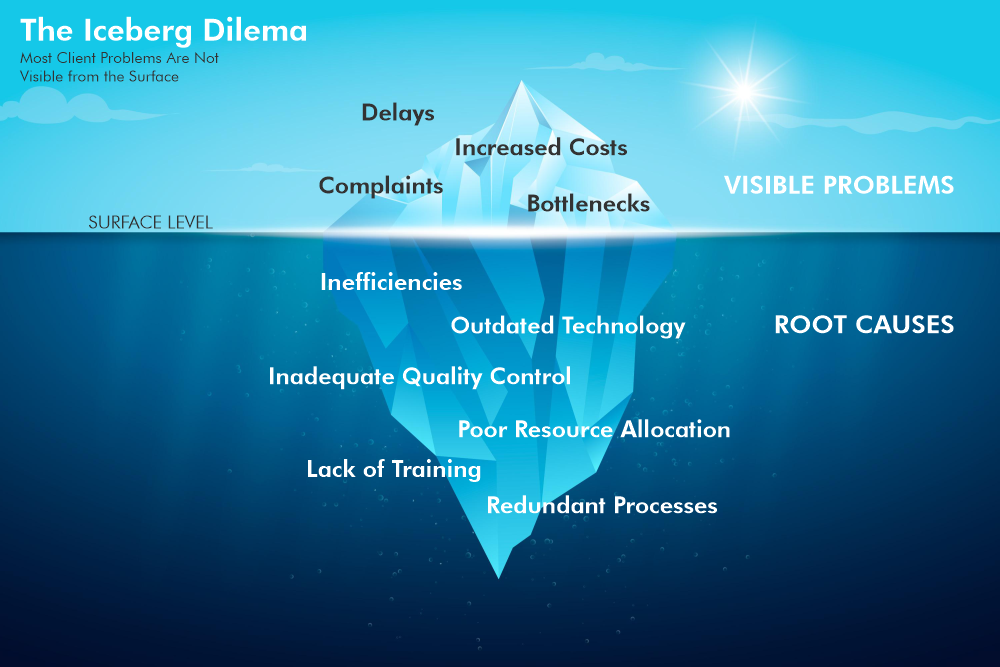Rachel Ramenda, Digital Marketing Specialist, analyzes the joint service-consulting model as a means of providing more effective, customized, and innovative solutions to healthcare organizations. She explains that this approach, which emphasizes understanding clients’ specific needs, leads to superior outcomes and improved client-vendor relationships.
Please click on the video to the right to learn more about the author, hear her insights on this white paper, and learn what motivated her to write about this topic.
To discuss this white paper, please contact Rachel using the information provided at the end of the page.
As the healthcare industry grows increasingly competitive, more is expected of professional service providers. While the vendors of the past survived by delivering standardized, one-size-fits-all solutions, today’s service providers must adapt to a more complex and demanding environment. Modern healthcare organizations require tailored, innovative professional services that address their unique challenges to help them stay ahead in a rapidly evolving landscape.
The most successful service providers are those that incorporate consulting best practices into each of their offerings. This approach not only enhances the quality of the services but also builds long-term client relationships. By fostering trust and sustained business growth, joint service-consulting providers better meet client needs, adapt to volatile market conditions, and deliver innovative solutions that drive success.
The joint service-consulting model is a revolutionary methodology for service providers that offers both strategic guidance and solution implementation for their clients. By combining the efficiencies and cost savings of outsourced professional services with the insights and expertise of consulting, joint service-consulting companies execute comprehensive solutions that drive innovation and operational optimization.
This forward-looking model represents a significant advancement in the way businesses achieve and maintain a competitive advantage in their respective markets.

Harvard Business Review’s Hierarchy of Purposes (left) illustrates the evolution of traditional consulting. The items at the foundation of the pyramid represent the basic components of consulting, while the items at the top represent exceeding expectations.
Harvard Business School professor Arthur N. Turner explains, “Moving up the pyramid toward more ambitious purposes requires increasing sophistication and skill in the processes of consulting and in managing the consultant-client relationship.”1
This underscores the superior value added by companies that engage in consulting-enhanced service delivery, an approach that ensures a more holistic and effective method of problem-solving. When these practices, especially those toward the top of the pyramid, are harnessed by service providers, the outcomes far exceed those of stand-alone consulting companies and stand-alone vendors.
A stand-alone consulting firm will not have the hands-on experience of a stand-alone service provider, while the latter will lack the strategic insights and high-level expertise of seasoned consultants. Thus, the market imperative is for providers to offer a solution set that encompasses the symbiotic benefits of consulting and professional services.
A key differentiator of the joint service-consulting model is the transformative effect on client success. While most vendors focus on “servicing” the client, the newer joint service-consulting model emphasizes “serving.” According to The Center for Sales Strategy, “Servicing is the minimum you need to do…
The word serving sets a totally different standard. At the most basic level, it reminds the salesperson that the client is a human, not a piece of equipment, and that the human dimension of the business relationship is important.”2
The joint service-consulting model inherently prioritizes interpersonal connections and problem-solving in a way that traditional vendors do not. The majority of professional service providers default to serving their own business goals by placing clients in boxes of predetermined problems and off-the-shelf solutions, whereas joint service-consulting companies harness a flexible, holistic methodology that integrates client culture and strategy with service delivery to ensure full support for customers. This framework allows for a deeper understanding of each client’s unique context, which fosters innovative solutions and long-term partnerships based on collaboration and mutual success.
By prioritizing serving over servicing through the joint service-consulting model, companies can more clearly understand the needs, challenges, and goals of each client. This empathetic approach not only enhances client satisfaction but also builds trust and long-term loyalty.

1 https://hbr.org/1982/09/consulting-is-more-than-giving-advice
2https://blog.thecenterforsalesstrategy.com/author/stephanie-downs
According to Harvard Business Review, a consultant “should neither reject nor accept the client’s initial description too readily.”3 The same applies to joint service-consulting companies. No matter how straightforward the problem may seem or how much internal research the client may have completed, a responsible professional service provider will begin by auditing the issue.
Other clients might approach a vendor with a surface-level prognosis and expect a thorough investigation. Warren J. Whittreich, Ph.D., explains, “Often a client who wishes to purchase a professional service senses that he has a problem, but is uncertain as to what the specific nature of his problem, really is.”4
Thus, the diagnostic phase is critical to developing targeted solutions. This stage begins with an in-depth analysis, which includes asking questions and gathering information to understand the root cause. By doing so, the service provider consolidates the data necessary to develop specialized solutions that target the core issue rather than the symptoms. This investigative method ensures that the services provided are highly relevant and tailored to the client’s specific needs, leading to better outcomes.

A traditional professional services company will attempt to “fit” clients’ challenges into boxes of pre-prescribed, standardized solutions. Rather than adapting their offerings to the clients’ needs, these companies will cut corners by re-utilizing processes that worked for others. This lackadaisical approach fails to address the unique complexities and individual requirements of each client. This results in frustration and an unhappy business relationship that culminates in a costly and renewed search for the right solution.
Although it may seem simpler and easier for a vendor to sell rigid, pre-configured services, a joint service-consulting provider will lean into consulting fundamentals to create a customized fit every time. The outcome is a more efficient use of resources that minimizes waste and maximizes value for stakeholders.
3https://hbr.org/1982/09/consulting-is-more-than-giving-advice
4https://hbr.org/1966/03/how-to-buysell-professional-services
Vee Healthtek, a leading professional services provider for the nation’s top healthcare organizations, is a prime example of the service-consulting model. Having partnered with seven of the top ten hospitals nationwide, Vee Healthtek has countless success stories using this model. In one such example, we worked with a prominent health system in the Northeast that struggled with physician adoption of best practice alerts (BPAs) within its electronic medical record software. These programmed notifications included important reminders and warnings about patient care. However, the health system found that physicians closed out of the BPAs without reading them. The organization contacted Vee Healthtek in want of more BPAs and a way to ensure physicians did not close out of them immediately.
Under the traditional service provider model, Vee Healthtek would have simply taken the client’s diagnosis at face value and provided more BPAs with a longer timer on each notification. However, by leveraging the company’s rich consulting background and mission of serving, not servicing, our team provided a more effective solution. We performed a comprehensive audit of the BPAs and interviewed the staff, which led to the discovery that the physicians were experiencing “alert fatigue,” from constant and often unnecessary BPAs. Not finding the alerts useful, the physicians defaulted to closing the tabs without reading them. After gathering and analyzing the client’s data, we removed the irrelevant BPAs and worked with subject matter experts to create new alerts that would benefit the physicians and their patients. The results were extraordinary: before our solution, the provider acceptance rate of the BPAs was less than 50%. After the implementation of our new BPAs, the acceptance rate increased astronomically to 90%. Our work not only improved workflows for physicians but also led to improved outcomes for patients as the BPAs were more relevant, accurate, and useful.
This case demonstrates the proven power of the service-consulting model. By truly understanding the client’s needs and by exceeding standardized solutions, Vee Healthtek significantly improved the BPA system. We expertly utilized consulting best practices to investigate the issue and provide answers that streamlined processes for the physicians. Our holistic approach enabled us to form a partnership with our client in which we continue to enhance its operations.
Vee Healthtek’s use of the joint service-consulting model sets us apart from other professional services firms that fail to go above and beyond for their clients. Through continuous collaboration and a deep understanding of the challenges faced by payers and providers, we aim to set new standards in the healthcare industry. Looking forward, Vee Healthtek’s commitment to excellence and our customer-centric approach will remain at the forefront of our client strategy, which will enable us to continue our legacy of dynamic, impactful solutions.
https://hbr.org/1982/09/consulting-is-more-than-giving-advice
https://blog.thecenterforsalesstrategy.com/author/stephanie-downs
https://hbr.org/1966/03/how-to-buysell-professional-services